Abstract
A simple method is described for preparing mouse histocompatibility antigens of high specific activity. Material is eluted from cells in hypotonic salt without allowing cytolysis; a suitable degree of hypotonicity depends on the cell type. Specificities determined by H-2 and some non-H-2 alleles have been measured by inhibition of release of radioactivity from labelled target cells incubated in isoantiserum and complement. Certain tumour cells and the antigens isolated from them have aberrant histocompatibility antigen composition.
Full text
PDF
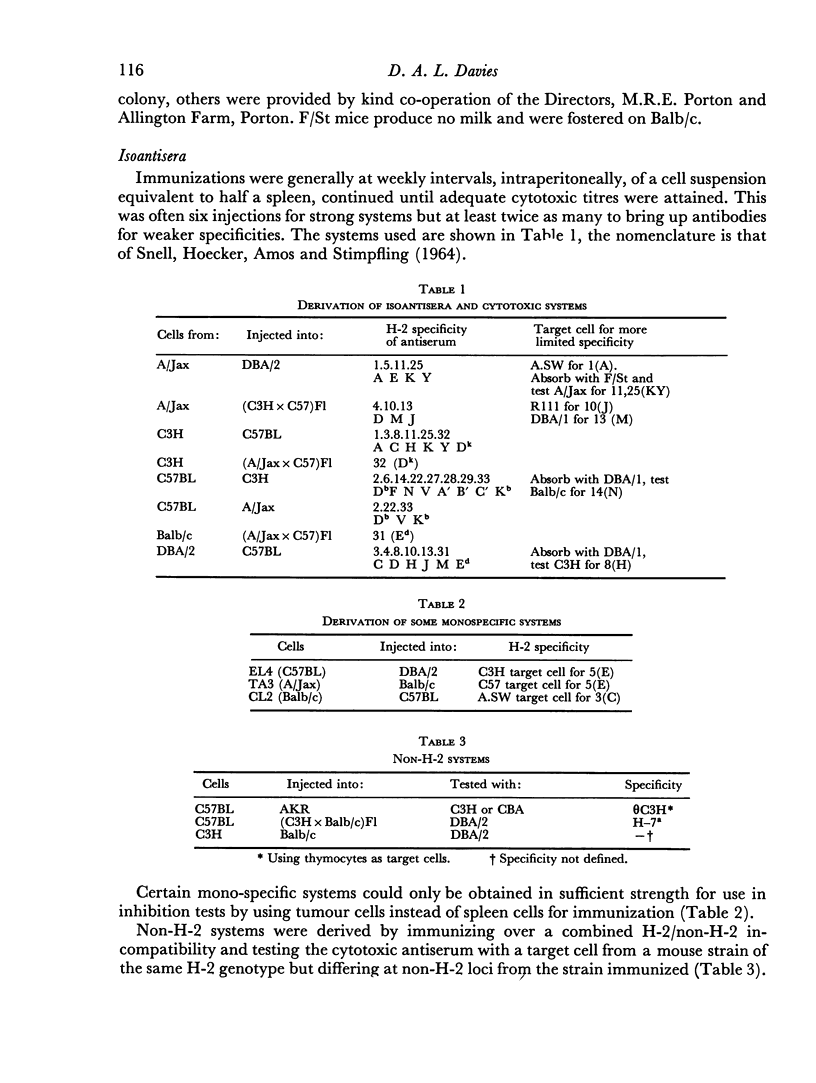
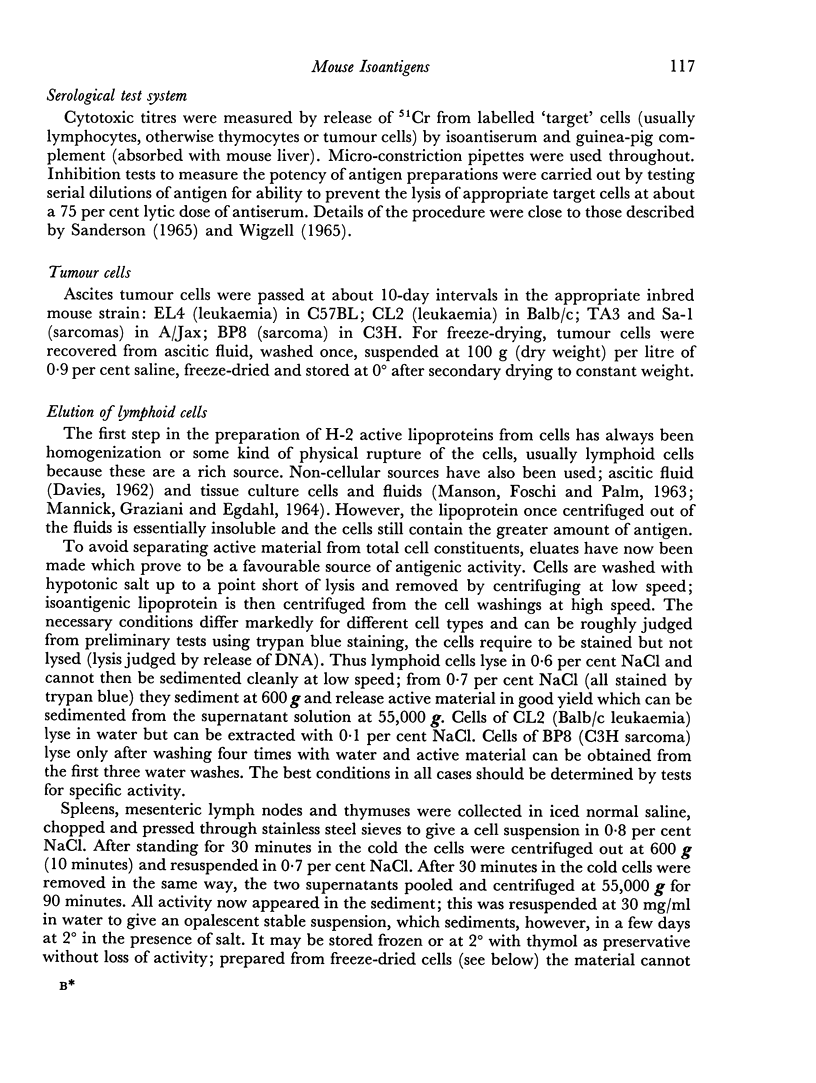
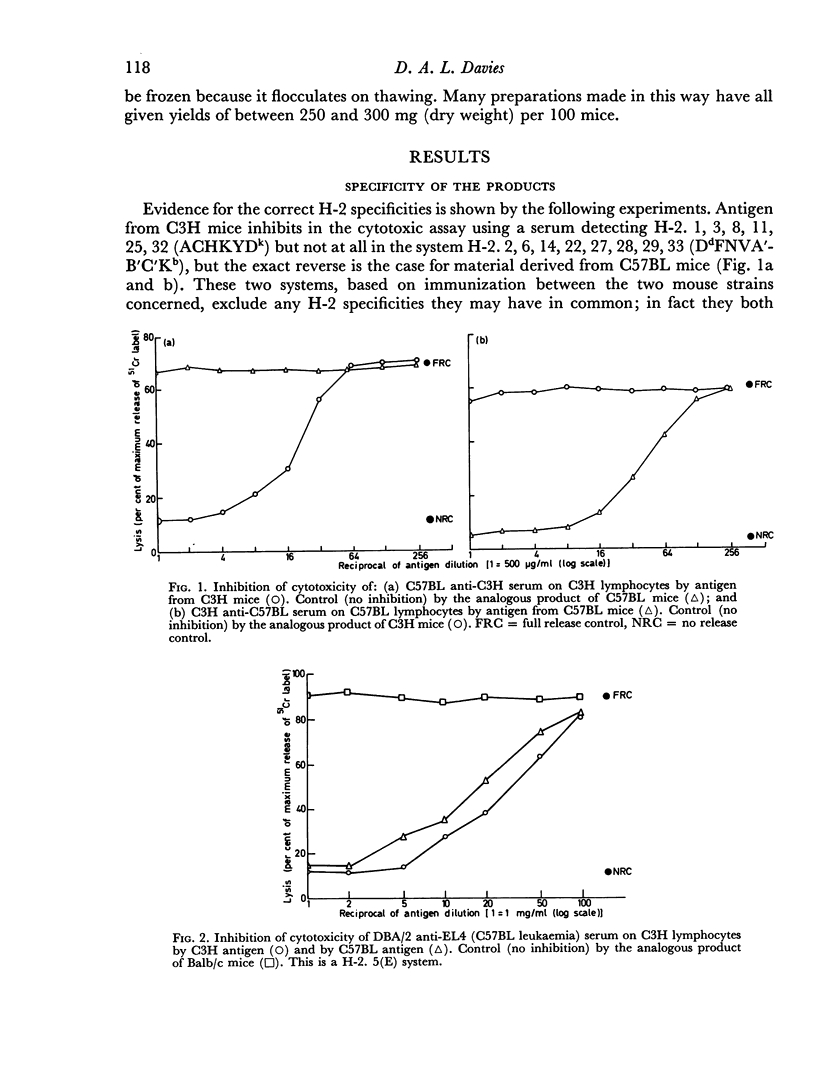
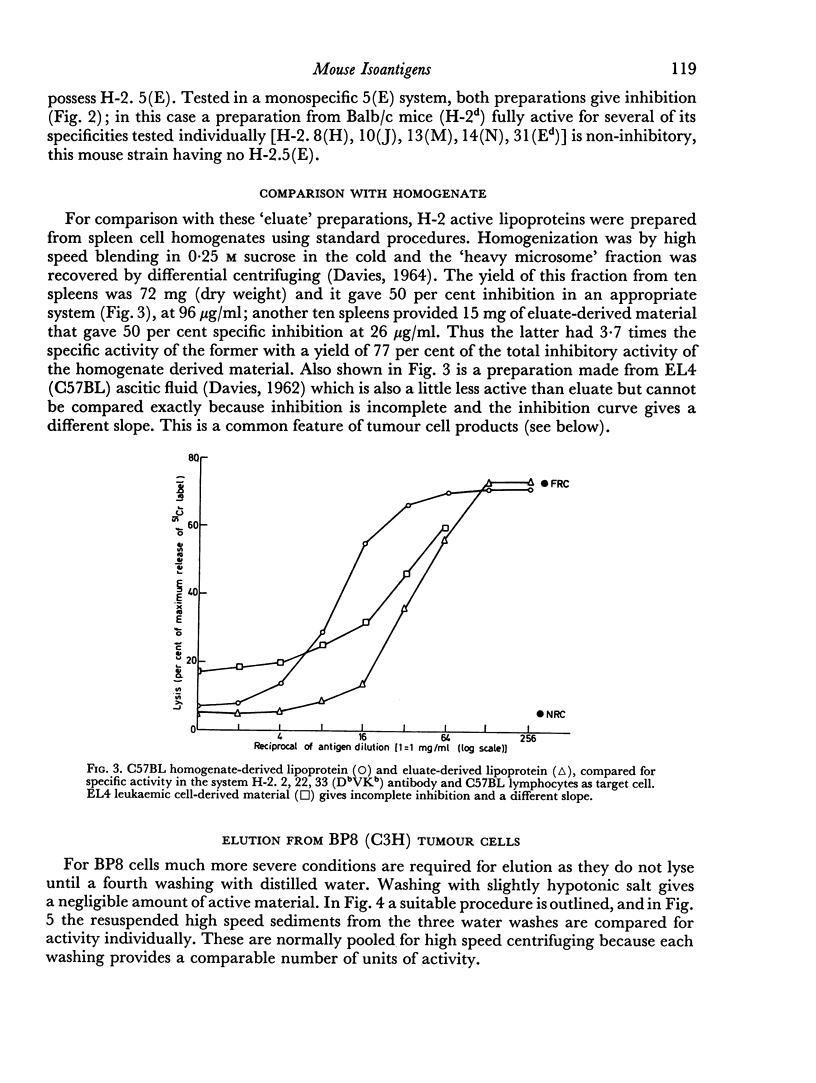
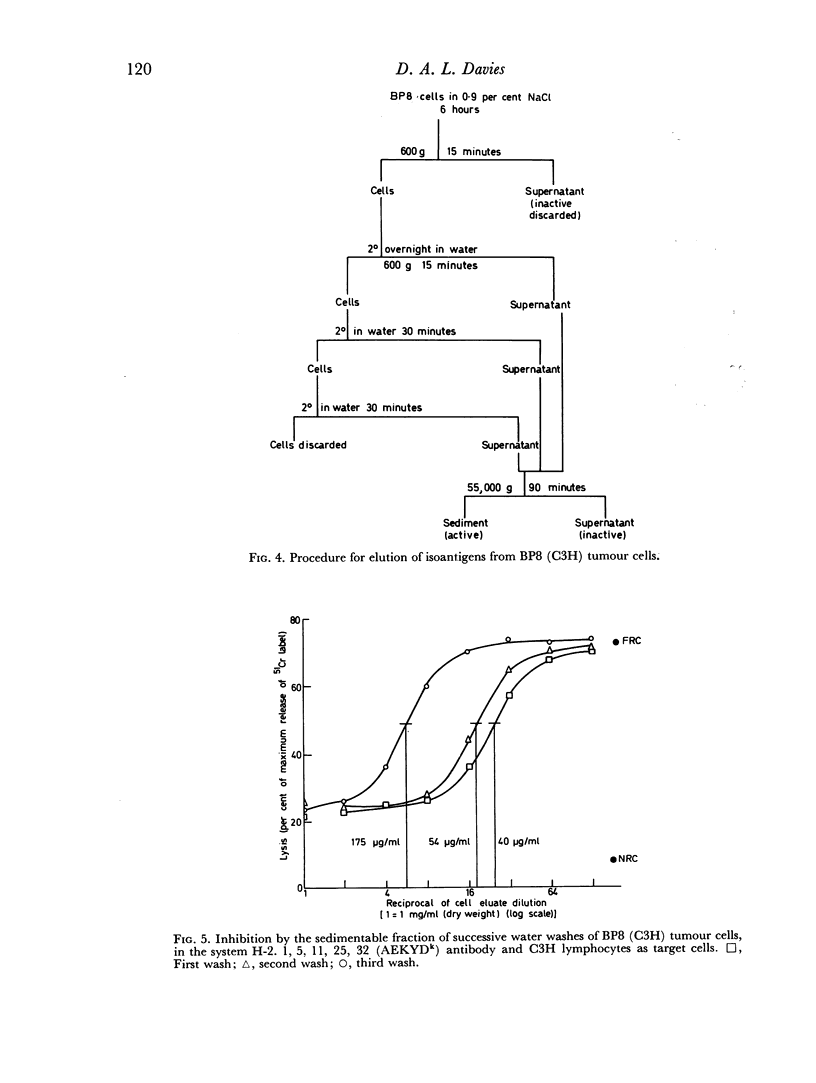
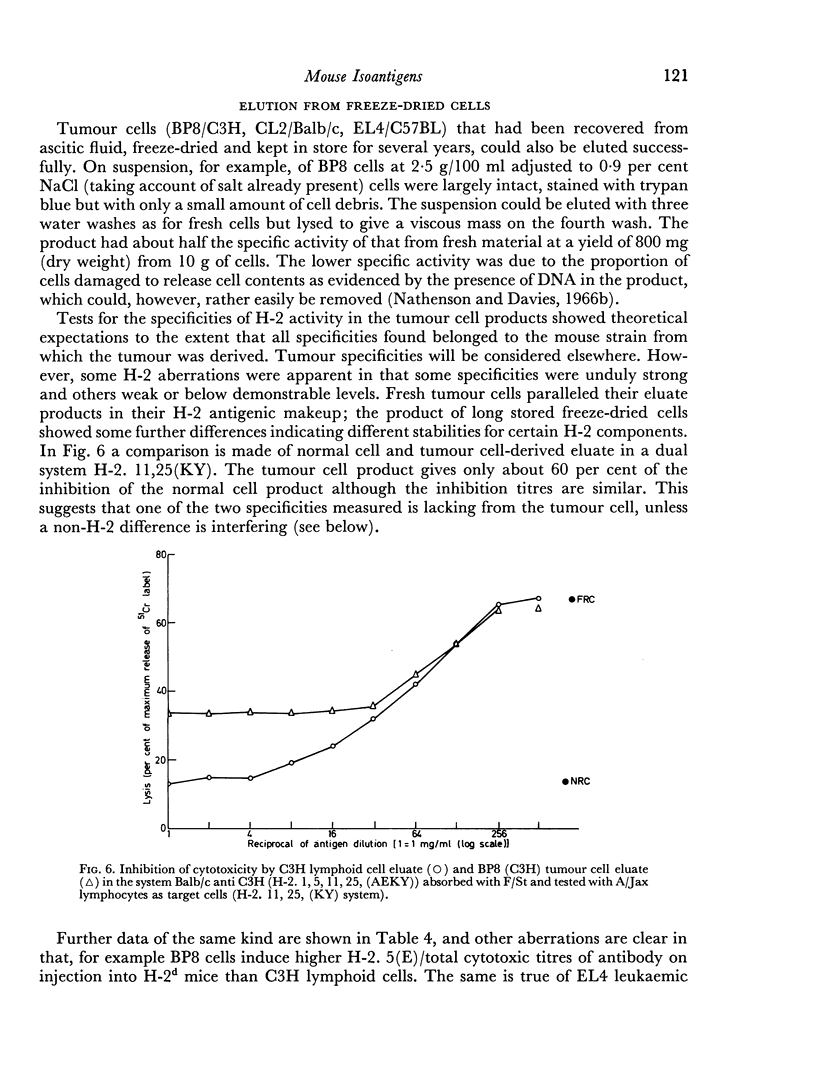
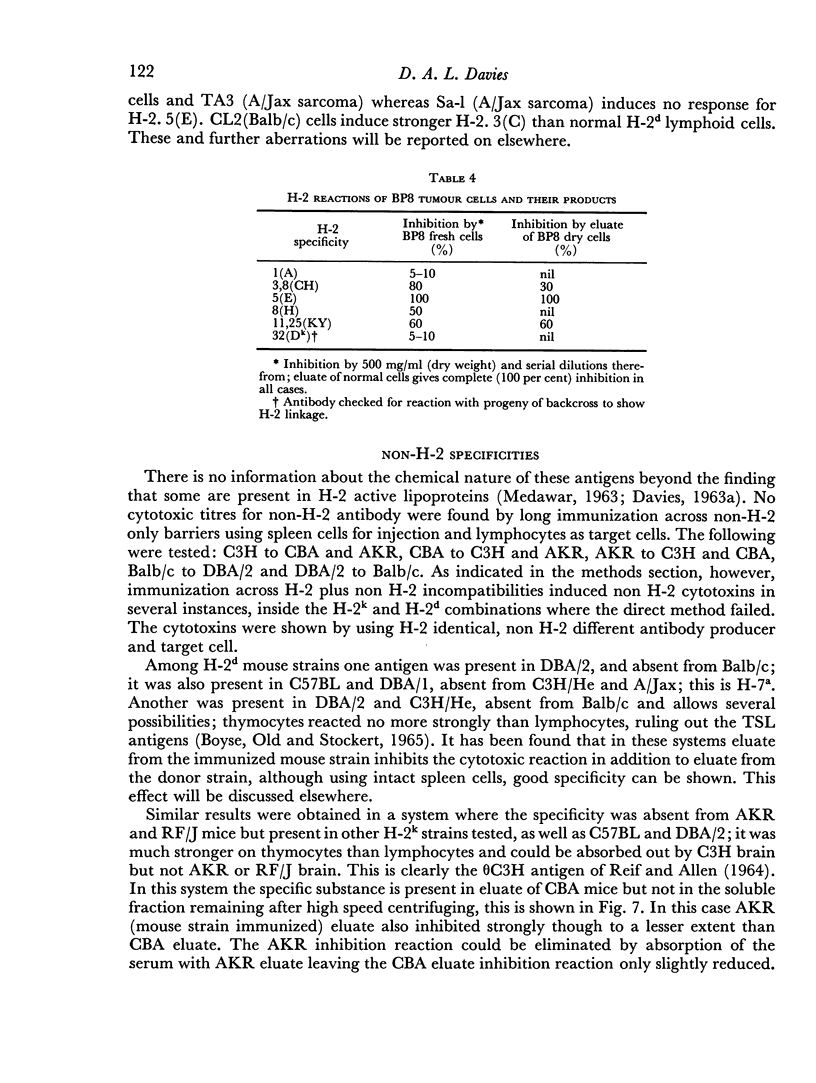
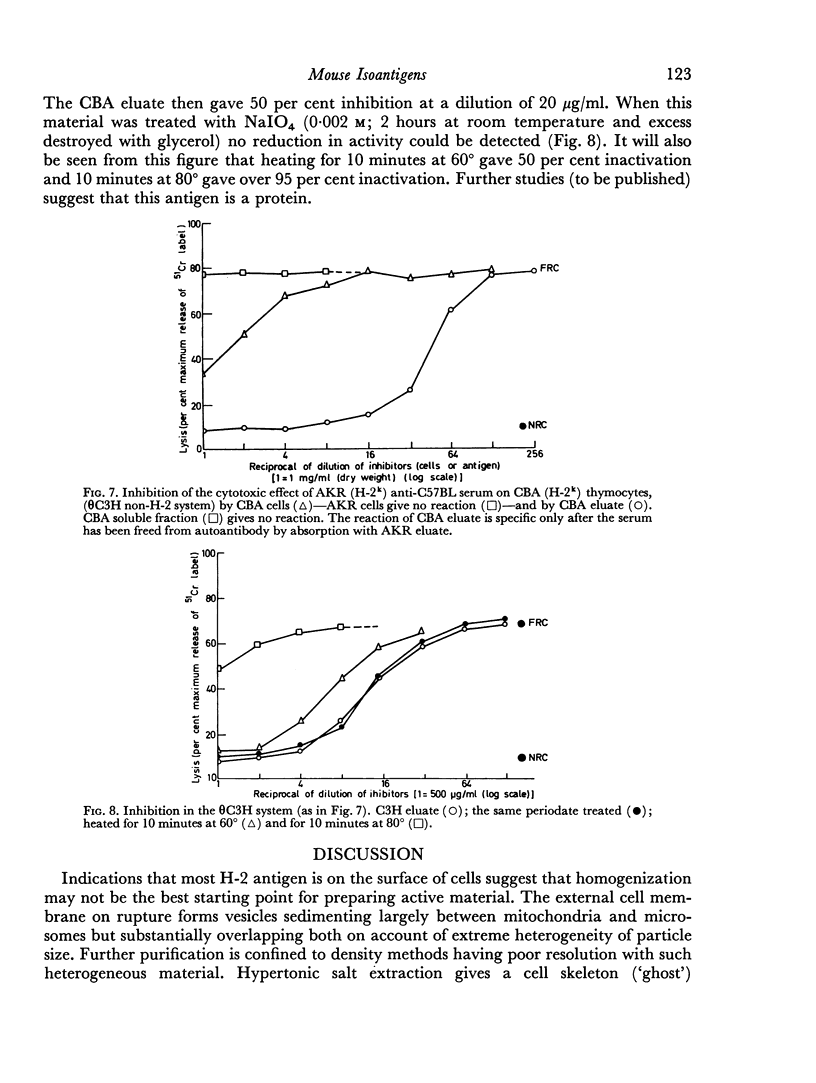
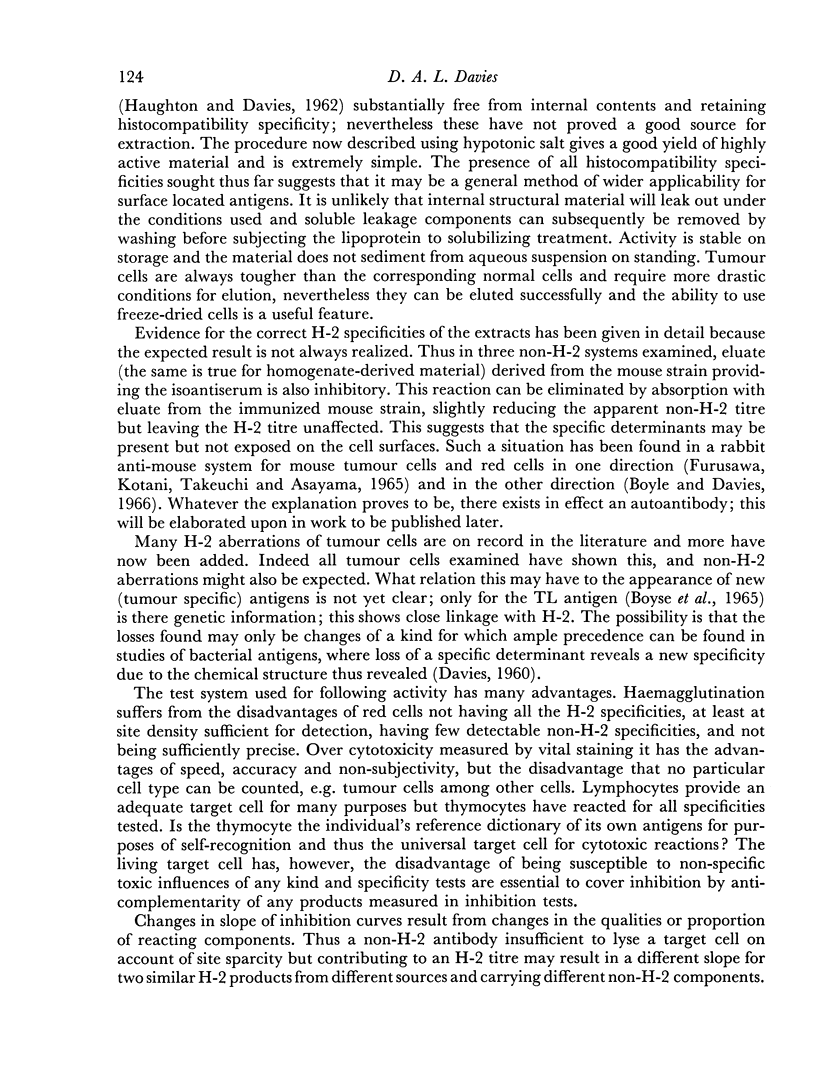
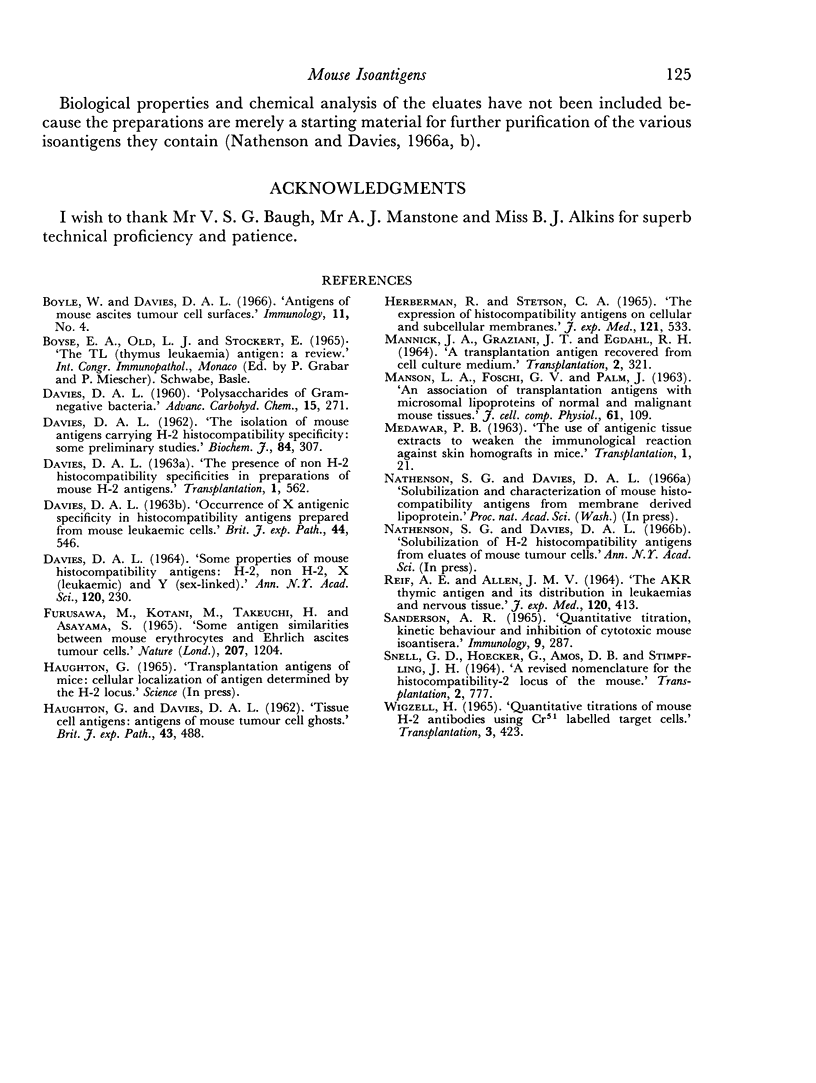
Selected References
These references are in PubMed. This may not be the complete list of references from this article.
- DAVIES D. A. OCCURRENCE OF X ANTIGENIC SPECIFICITY IN HISTOCOMPATIBILITY ANTIGENS PREPARED FROM MOUSE LEUKAEMIC CELLS. Br J Exp Pathol. 1963 Oct;44:546–550. [PMC free article] [PubMed] [Google Scholar]
- DAVIES D. A. Polysaccharides of gram-negative bacteria. Adv Carbohydr Chem. 1960;15:271–340. doi: 10.1016/s0096-5332(08)60190-3. [DOI] [PubMed] [Google Scholar]
- DAVIES D. A. SOME PROPERTIES OF MOUSE HISTOCOMPATIBILITY ANTIGENS: H-2, NON-H-2, X (LEUKEMIC) AND Y (SEX LINKED). Ann N Y Acad Sci. 1964 Nov 30;120:230–236. doi: 10.1111/j.1749-6632.1964.tb34721.x. [DOI] [PubMed] [Google Scholar]
- DAVIES D. A. THE PRESENCE OF NON-H-2 HISTOCOMPATABILITY SPECIFICITIES IN PREPARATIONS OF MOUSE H-2 ANTIGENS. Transplantation. 1963 Oct;1:562–568. doi: 10.1097/00007890-196301040-00016. [DOI] [PubMed] [Google Scholar]
- DAVIES D. A. The isolation of mouse antigens carrying H2-histocompatibility specificity: some preliminary studies. Biochem J. 1962 Aug;84:307–317. doi: 10.1042/bj0840307. [DOI] [PMC free article] [PubMed] [Google Scholar]
- Furusawa M., Kotani M., Takeuchi H., Asayama S. Some antigen similarities between mouse erythrocytes and Ehrlich ascites tumour cells. Nature. 1965 Sep 11;207(5002):1204–1204. doi: 10.1038/2071204a0. [DOI] [PubMed] [Google Scholar]
- HAUGHTON G., DAVIES D. A. Tissue cell antigens: antigens of mouse tumour cell ghosts. Br J Exp Pathol. 1962 Oct;43:488–495. [PMC free article] [PubMed] [Google Scholar]
- HERBERMAN R., STETSON C. A., Jr THE EXPRESSION OF HISTOCOMPATIBILITY ANTIGENS ON CELLULAR AND SUBCELLULAR MEMBRANES. J Exp Med. 1965 Apr 1;121:533–549. doi: 10.1084/jem.121.4.533. [DOI] [PMC free article] [PubMed] [Google Scholar]
- MANNICK J. A., GRAZIANI J. T., EGDAHL R. H. A TRANSPLANTATION ANTIGEN RECOVERED FROM CELL CULTURE MEDIUM. Transplantation. 1964 May;2:321–333. doi: 10.1097/00007890-196405000-00001. [DOI] [PubMed] [Google Scholar]
- MEDAWAR P. B. The use of antigenic tissue extracts to weaken the immunological reaction against skin homografts in mice. Transplantation. 1963 Jan;1:21–38. doi: 10.1097/00007890-196301010-00004. [DOI] [PubMed] [Google Scholar]
- REIF A. E., ALLEN J. M. THE AKR THYMIC ANTIGEN AND ITS DISTRIBUTION IN LEUKEMIAS AND NERVOUS TISSUES. J Exp Med. 1964 Sep 1;120:413–433. doi: 10.1084/jem.120.3.413. [DOI] [PMC free article] [PubMed] [Google Scholar]
- SNELL G. D., HOECKER G., AMOS D. B., STIMPFLING J. H. A REVISED NOMENCLATURE FOR THE HISTOCOMPATIBILITY-2 LOCUS OF THE MOUSE. Transplantation. 1964 Nov;2:777–784. doi: 10.1097/00007890-196411000-00010. [DOI] [PubMed] [Google Scholar]
- Sanderson A. R. Quantitative titration, kinetic behaviour, and inhibition of cytotoxic mouse isoantisera. Immunology. 1965 Sep;9(3):287–300. [PMC free article] [PubMed] [Google Scholar]
- WIGZELL H. QUANTITATIVE TITRATIONS OF MOUSE H-2 ANTIBODIES USING CR-51-LABELLED TARGET CELLS. Transplantation. 1965 May;3:423–431. doi: 10.1097/00007890-196505000-00011. [DOI] [PubMed] [Google Scholar]


